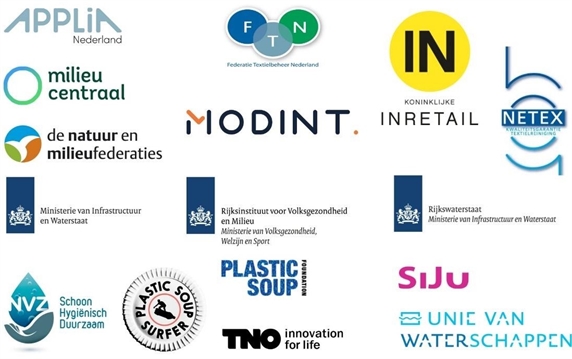New method for measuring microplastics from clothing within reach
Utrecht, 15 September 2021 - TNO yesterday presented a report containing recommendations on the development of a new method for measuring where and when small plastic particles are released from clothing.
It is known that small plastic particles are released from synthetic clothing during production, wearing, washing and drying; as yet however it is unclear how and in what quantity. The development of the new uniform measuring method is therefore a major step on the road to reducing environmental pollution and cutting back on the possible health effects of minute plastic particles from clothing, also referred to as microplastic fibres.
The recommendation from TNO takes the form of a proposal for a follow-up research programme commissioned by - and in collaboration with - the Dutch Ministry of Infrastructure and Water Management and the stakeholder network ‘Iedereen draagt bij’. The members of this Dutch network are working together to reduce the release of microplastic fibres from clothing. The first step in the process is to investigate how much plastic is released from clothing, when. Using this information, each of the stakeholders can take action in their particular field, to help ensure that fewer microplastic fibres are released from synthetic clothing. The network is made up of a diverse group of stakeholders from the clothing, washing machine and detergent sectors, knowledge institutes, water authorities and NGOs.
Uncertain spread and impact of microplastics
Knowledge about microplastics in the environment and the effects of minute plastic particles on human and animal health is constantly growing. One of the sources of microplastics is synthetic clothing. Many items of clothing are produced from synthetic materials such as polyester, polyamide, acrylic and elastane. Friction generated during the production, wearing, washing and drying of synthetic clothing releases microplastic fibres into the air, water and soil. Precisely how many microplastic fibres from clothing enter the environment and when this happens is not yet clear. Results from past studies were difficult to compare. The network has therefore recognised the importance of establishing a uniform measuring method, so that the results of future studies are easily comparable.
New uniform measuring method
TNO is working alongside the network on a new uniform measuring method that makes it possible to determine the discharge of microplastic fibres from clothing into water. The report published yesterday is a first step towards developing the new measuring method. The proposal is to test the measuring method in a variety of situations (the production and washing of clothing and the purification of wastewater) by comparing water samples. In the future, it will then be possible to investigate how much plastic is released into the water, when. Using this method, stakeholders can develop a picture of which measures for reducing the release of microplastic fibres from clothing have the greatest impact. If the measuring method works well, it could be used to test the influence of how the yarns and fabrics are made and whether there are differences between the various materials. It will also provide a picture of the influence of the use of detergent and fabric softener, the washing temperature and the water volume.
Based on their principles of quality, sustainability, circularity and knowledge development, the various stakeholders are looking to identify an efficient method of preventing microplastic fibres ending up in the environment.
Tried and tested tips for consumers
Knowledge institutes from the network in the past identified the steps already available to consumers to help reduce the level of microplastic fibres released from synthetic clothing during washing and drying. There are a few simple tips to help protect the environment. Only wash your clothes when necessary; in other words, wear them for longer if they do not yet smell, or are not dirty. Always wash with a full machine, and above all at low temperatures. Synthetic clothing - in particular fleece - does not need to be put in the tumble drier; it already dries quickly by itself. If you do use the tumble drier, dispose of the fluff from the filter with the residual waste, and never rinse it down the sink.

